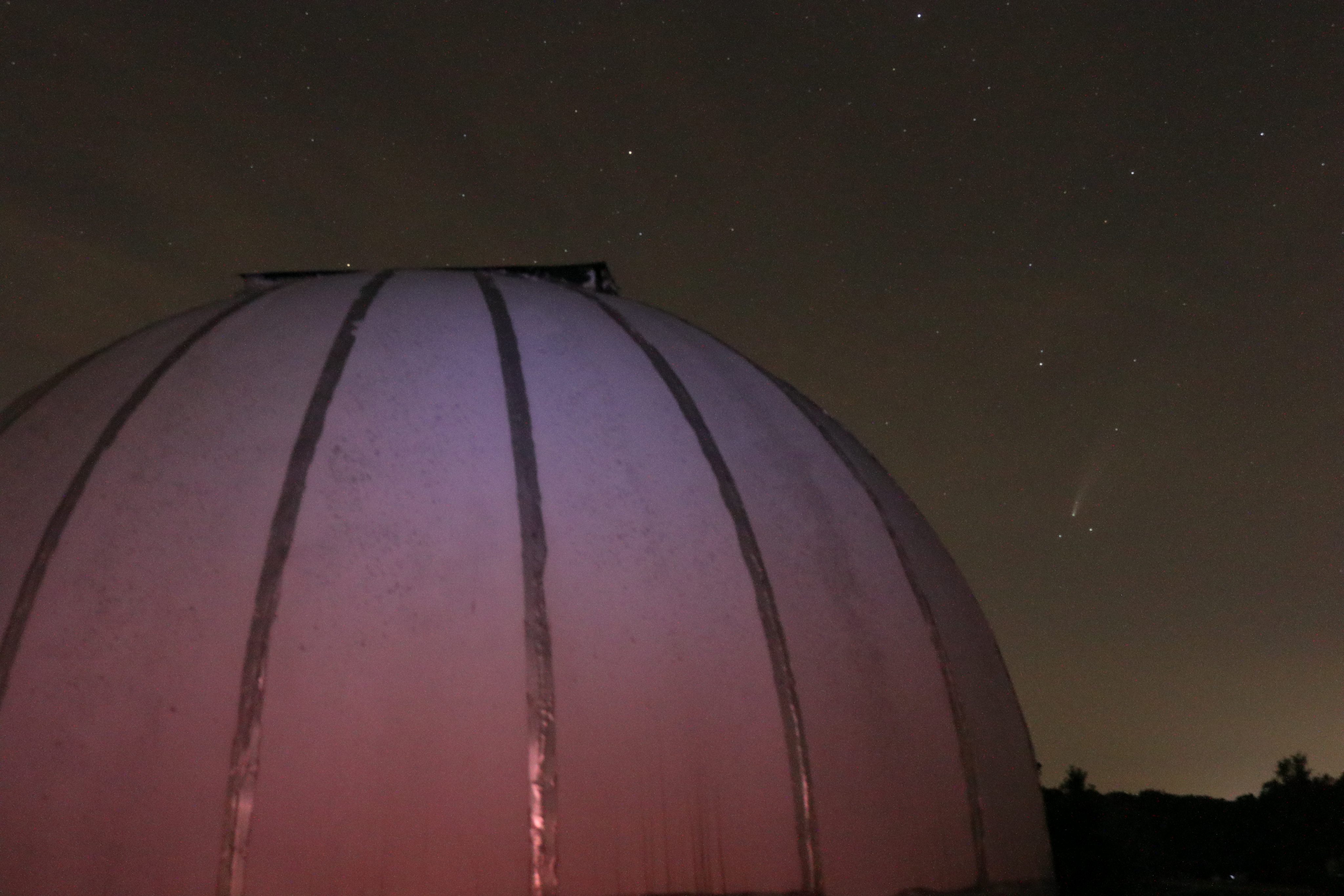Did COVID-19 Come From Space?
Few have probably noticed that throughout the current year this column has refrained from referencing or acknowledging the ongoing worldwide COVID-19 pandemic. The reason for the omission is simply that this is a column for astronomy and space exploration and thus the current pandemic is irrelevant in that regard.
But what if that was not always the case for historical pandemics? Could there have possibly been some connection between the cosmos and previous plagues of highly infectious diseases? The question is one that has been advanced before.
There once was a lecture by the late British astronomer Sir Fred Hoyle at the university laboratory where I was working at the time. Hoyle is best known for coining the term “Big Bang” to describe the famous theory that all matter and energy comprising the physical universe started out as a hot dense singularity and suddenly took off, to become the expanding observable universe we see before us today. Hoyle was skeptical of the theory and so he used the term in derision of the theory. Curiously however, the name stuck as it was embraced by the theory’s proponents. (Similar to the story behind how the rock band Led Zeppelin got its name, which is beyond the scope of this article.)
Hoyle’s fundamental hypothesis was that material from comets, asteroids and even meteorites have at times directly shaped and even changed the course of human history. We know what asteroids are thought to have done to the dinosaurs – mass extinction. What about their effect on humans?

A common type of meteorite found in many private collections consists of metallic nickel-iron. Imagine if a tribe of pre-iron-age humans discovered a fairly large meteorite of this type. It would provide them a direct source of metal without the need to develop the technologies needed for mining the ore and forging iron. With a ready supply of raw iron, they could fabricate tools such as knives, arrow heads and spear points and therefore boost their efficiency in hunting prey with which to feed their people, and generating leisure time during which they might make new discoveries sooner than they would have without meteoritic iron. In battling other humans, their metal weapons could have won the local arms race allowing them to change history by defending themselves from extinction or conquering others and dominating their world.
This was typical of the kinds of cosmic impact on humankind expressed by Sir Hoyle. Then there was the case for comets. Hoyle speculated that pandemics of influenza-like diseases were introduced to the earth by comets. When our world passes through the debris stream of a virus carrying comet, tiny fragments of the comet can make their way to the surface with their diseased cargo intact.
This explains why viruses and deadly pandemics appear suddenly, and why their geographical point of origin may be difficult to pin down. The debris could spread and come down in multiple locations.
Sir Hoyle’s hypothesis of the cosmic origin of some diseases was described in a 1977 paper in New Scientist, co-written with Chandra Wickramasinghe, entitled Does Epidemic Disease Come from Space? Hoyle highlighted presumed coincidences where plagues and pestilence occurred in conjunction with the apparition of identifiable comets. In such cases a widespread epidemic materializes in separate locations almost simultaneously and these “occurred before the advent of air travel, when movement of people across the Earth was a slow and tedious process.”
This theory is at odds with the prevailing mainstream one that depends on random mutations and genetic recombinations in the virus for creating new strains. Hoyle viewed the cometary origin hypothesis as a simplification that could satisfy Ockam’s Razor, the notion that the simplest theory is typically the right answer.
Hoyle reiterated in his lecture that his “diseased comet” idea is merely conjecture, although he had earlier written a book and several papers on the subject.
Few scientists today believe that COVID-19 came from space. The accepted source location is the Chinese city of Wuhan. What is in dispute currently is where in that city the virus originated. Did it come from a meat market? Did it escape from a Chinese virology lab? Was its release accidental or intentional? The answers are still being investigated and debated but hopefully will be answered in time.
Meanwhile, a paper published this year entitled Comments on the Origin and Spread of the 2019 Coronavirus, from a team led by Wickramasinghe, proposes that the onset of COVID-19 was ”probably linked to the arrival of a pure culture of the virus contained in cometary debris” coming directly from an observed fireball meteor that fell a distance away from “Wuhan on 11 October 2019 followed shortly after with the first recorded cases in Hubei [province]” the following month. Furthermore, tiny fragments of the comet remained airborne, settling in different locations worldwide leading to other observed so-called cluster outbreaks. This theory for the origin of the virus has not been widely accepted, however.
So far, comets are still presumed innocent. The apparition this summer of the beautiful comet C/2020 F3 (NEOWISE) was a joyous sight to behold and nothing for those living under the pandemic to fear.
–Curt Roelle
